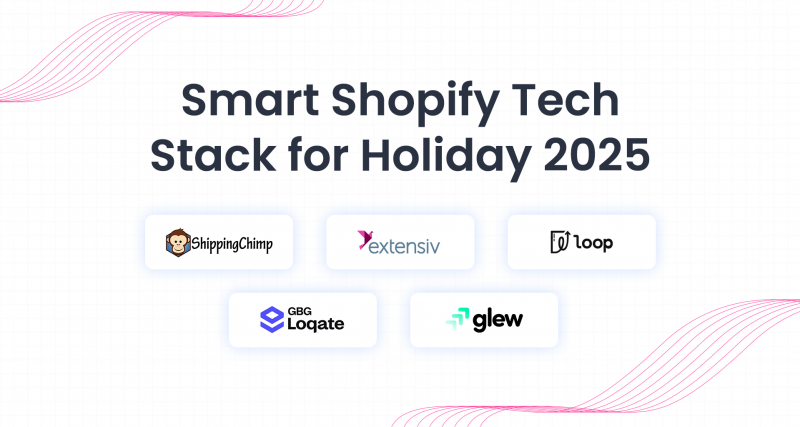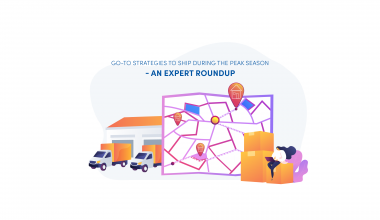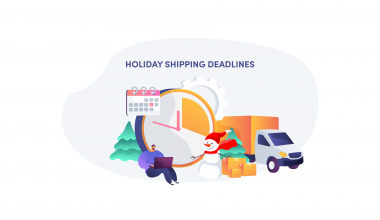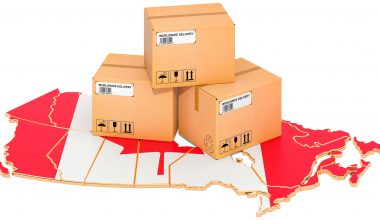The 2025 holiday rush is getting closer, and Canadian and global Shopify brands have to get ready and start preparing for what could be one of the busiest shopping seasons in years. Since online traffic is expected to surge, it is high time for brands to ensure their backend systems are tighter and their approach is smarter than before.
It is important to invest in building a connected and intelligent Shopify tech stack that automates operations, reduces friction, and enhances visibility across the supply chain. Smart integrations like ShippingChimp help brands manage shipping, analytics, and fulfillment with precision, turning seasonal pressure into efficient performance.
Why Holiday 2025 Will Test Your Shopify Stack?
The 2025 holiday season, from all accounts ranging from strikes to the geopolitical ecosystem, is shaping up to be a real stress test for Shopify merchants. Consumer spending is expected to rise, and at the same time, customer expectations around delivery speed, stock accuracy, and return convenience are also increasing. As competition intensifies across Canada and global markets, even minor technical gaps cannot be afforded since they can have major financial consequences.
On the other hand, merchants who invest early in a smarter, automated tech stack can maintain their presence in the market for longer, as they can provide customers with real-time visibility while minimizing manual work. These factors contribute to such businesses scaling seamlessly through the busiest shopping period of the year.
Core Shopify Tech Integrations for Holiday 2025 : What they are and core features
Listed below are the core Shopify tech integrations that brands must have this holiday season.
1. Shipping with zero surcharges: ShippingChimp
ShippingChimp plays a vital role in ensuring timely and transparent order delivery during peak sales periods. ShippingChimp is canada’s #1 eCommerce shipping carrier start helps d2c brands streamline shipping, generate labels in bulk and share live tracking updates. Shipping costs start as low as $5.11. ShippingChimp offers a consistent shipping rate even during holidays when national carriers add surge prices, surcharges etc.
Predictive alerts, shipping performance analytics, and customer feedback tools allow brands to monitor performance in real time. As a result, it does not matter whether a business ships locally within Canada or globally; ShippingChimp helps D2C brands help deliver on time and lowest cost.
2. Order & Inventory Management Sync : Extensiv
With Extensiv, users get access to a platform that connects inventory, warehouse, and order management systems directly to Shopify, ensuring all data remains accurate across multiple sales channels. This single point is of special importance during the 2025 holiday season because the surge in orders can often lead to stockouts or overselling.
One of the best examples of this is Knix Wear, a Canadian apparel brand. The brand already uses Extensiv to synchronize Shopify data with its logistics network, maintaining real-time visibility into every product’s movement. The platform offers features such as multi-warehouse routing, automated stock updates, and intelligent order allocation.
Thanks to these tools, brands can fulfil orders from the closest or most cost-effective location while maintaining an accurate picture of inventory levels. Extensiv removes the need for manual reconciliation, which leads to the reduction of costly errors and improvement in customer satisfaction.
3. Returns & Reverse Logistics – Loop
Loop is designed to simplify returns and exchanges by turning them into customer-friendly, automated experiences. It integrates with Shopify to manage product returns, exchanges, and refunds while keeping merchants informed at every step.
Thanks to Loop’s analytics, merchants can identify return trends, find product defects, or sizing issues, which helps improve operations in the long term. By encouraging exchanges instead of refunds, it also helps retain revenue and loyalty. For Shopify brands seeking growth, Loop’s approach to turning returns from a logistical burden into a seamless and profitable touchpoint could be considered a game changer.
4. Address Validation & Fraud Prevention – Loqate
Loqate’s purpose is to enhance order accuracy by validating customer addresses in real time during checkout. Therefore, it is considered suitable for Shopify stores managing thousands of orders over the holidays, as the simple act of enhancing order accuracy can prevent costly delivery errors and delays.
Furthermore, merchants shipping internationally can take advantage of Loqate’s multiple language and format support to reduce the risk of failed deliveries due to regional differences. Thanks to Loqate’s integration, clean data across CRM and shipping platforms is maintained, which is essential for post-purchase tracking and analytics.
5. Analytics, Dashboarding & Exception Alerts – Glew.io
Glew.io provides Shopify brands with a comprehensive view of their sales, marketing, and operational data through unified dashboards and automated reporting. For example, brands like Kotn leverage this platform as it allows teams to monitor performance metrics such as sales velocity, inventory health, customer lifetime value, and fulfillment exceptions.
When it comes to the hectic Holiday 2025 season, Glew.io helps decision-makers spot trends instantly and act before small issues escalate. The system integrates data from Shopify, email marketing tools, and shipping platforms to transform scattered information into actionable insights.
It also features exception alerts that notify merchants when key indicators, including low stock or late shipments, fall outside defined parameters. This level of visibility helps teams stay proactive instead of reactive.
How to Build Your Holiday Shopify Tech Stack?
In order to get the full advantage of Shopify’s tech stack, one has to precisely know how to proceed. Here are the three steps that investors must focus on:
Audit Your Current Stack
Brands should start by reviewing all the tools currently connected to Shopify. They must determine which apps are essential and which to let go of since they can cause delays or data gaps.
Check whether key integrations like shipping, inventory, and analytics are communicating properly. This audit will reveal inefficiencies and outdated systems that need to be replaced. A clean, streamlined stack not only improves performance but also simplifies troubleshooting during the busy holiday season.
Prioritize Integrations That Save Time or Prevent Errors
After assessing the current stack, brands must shift their focus to technologies that directly impact speed and accuracy. Automations that sync inventory, validate addresses, or manage returns can save hours of manual work each week. Prioritizing such integrations ensures consistent data flow and fewer customer service issues.
Furthermore, it is important to choose tools that have proven Shopify compatibility and strong user support. By investing in time-saving and error-preventing systems, merchants can handle high order volumes without sacrificing service quality.
Stress Test Before Peak Season
This is an important step to stay ahead of the game. Before the surge begins, brands should consider simulating heavy traffic and order loads to test system stability. They must ensure that every integration, whether it is fulfillment-related or focused on returns and analytics, handles real-world pressure smoothly. This step reveals weak connections, outdated plugins, or slow syncing that could break during holiday demand.
Brands should also run mock orders, track reporting accuracy, and monitor response times. A thorough stress test helps ensure that the entire Shopify stack performs reliably under the toughest seasonal conditions.
Conclusion
A smart Shopify tech stack is no longer optional for brands entering the 2025 holiday season. With customer expectations higher than ever, efficiency, automation, and visibility will decide who thrives and who struggles. Each tool, whether it is ShippingChimp or Glew.io, plays a critical role in eliminating friction and keeping operations smooth.
Merchants that focus on early auditing, wise integration, and stress testing their systems will be better prepared to handle massive order volumes without disruption. It is about building a connected ecosystem of trusted apps, as this helps Shopify stores transform seasonal pressure into sustained growth.
FAQ
How much does a Shopify tech stack cost?
Costs vary by app, but most essential integrations range between $20 and $200 monthly, depending on scale and features.
Can small Shopify stores use these integrations too?
Yes. Most tools offer affordable entry plans, making automation and analytics accessible even for small or newly launched Shopify stores.
Do these integrations slow my store down?
When properly configured, they don’t. Reputable apps are optimized for Shopify’s API and work in the background without affecting site speed.
Do I need developers?
No, you don’t necessarily need devs. Most Shopify integrations offer plug-and-play setups, though larger brands may use developers for custom workflows or scaling.
What’s the best starting point for integration?
Start with the essentials that affect customers most. Begin with ShippingChimp for shipping, add Loop for returns, and connect Extensiv for order and inventory management. These three create a solid foundation for accuracy, faster fulfillment, and a smoother customer experience ahead of the 2025 holiday rush.
- Best Shipping Software for Canadian D2C Brands - November 25, 2025
- Why Affordable Express Shipping Feels Impossible During the Holidays? - November 19, 2025
- Why Holiday Shipping Can Make or Break Canadian Electronics Brands? - November 13, 2025






